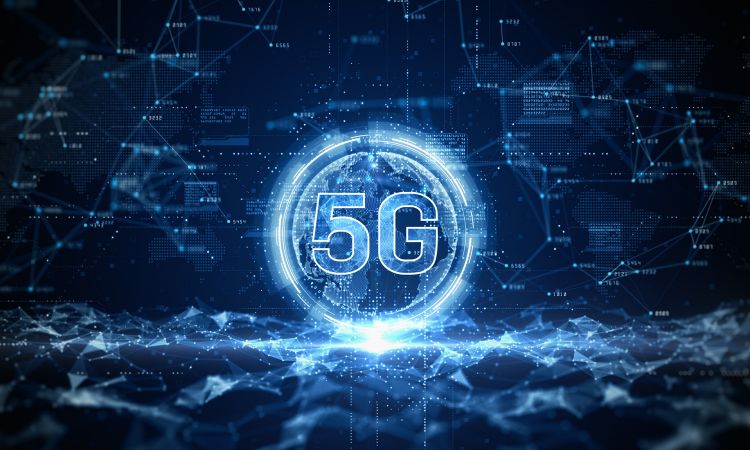
The convergence of 5G and the Internet of Things (IoT) represents a significant technological shift, promising to revolutionize industries by enabling faster, more reliable, and more efficient device connectivity. As of 2023, the global 5G IoT Market Size has reached an impressive valuation of approximately USD 9.74 billion. With an anticipated compound annual growth rate (CAGR) of 75.5%, the market is expected to burgeon to an estimated USD 1,538.38 billion by 2032. This growth is driven by the transformative impact of 5G technologies on IoT applications, ranging from industrial automation to smart healthcare solutions.
Comprehensive Benefits of 5G in IoT
The integration of 5G in IoT ecosystems brings multifaceted benefits, fundamentally enhancing the way devices communicate and interact:
- Ultra-High Speeds and Low Latency: 5G introduces significantly lower latency and higher data throughput, critical for real-time applications such as autonomous driving and real-time remote monitoring.
- Increased Connection Density: 5G can support up to one million devices per square kilometer, a necessity for the expanding universe of IoT devices in densely populated smart cities.
- Reliability and Availability: Enhanced reliability in communication ensures that critical IoT applications, such as those in healthcare and industrial environments, function uninterruptedly.
- Energy Efficiency: 5G technology improves the power efficiency of network connections, which is crucial for small IoT devices that rely on battery power.
Key Industry Developments
The 5G IoT sector is marked by several pivotal developments:
- Advanced Network Deployments: Major telecom operators and equipment manufacturers are accelerating the deployment of 5G networks globally. For instance, the rollout of 5G networks across urban and industrial areas is enabling more extensive and robust IoT connectivity.
- Innovative Product Launches: Tech companies are continually innovating in the 5G IoT space. For example, the launch of 5G-capable IoT modules and chips that facilitate faster data transfer rates and improved device performance.
The global 5G IoT market is poised for exponential growth, driven by the transformative capabilities of 5G technology and the increasing demand for connected devices. While challenges remain, particularly in security and integration, the ongoing advancements and strategic investments by key players are expected to propel the market towards new heights of innovation and efficiency. As we look to the future, the interplay between 5G and IoT will continue to be a critical focus for industries aiming to leverage the next wave of digital transformation.
Driving Factors
The expansion of the 5G IoT market is fueled by a combination of technological, economic, and regulatory drivers:
- Surge in Smart Device Adoption: The growing demand for smart home devices and city-wide IoT applications propels the need for robust, scalable 5G IoT solutions.
- Government and Corporate Investment: Significant investments by governments in digital infrastructure and by corporations in upgrading their operational technologies to leverage IoT capabilities stimulate market growth.
- Technological Innovation: Continuous advancements in complementary technologies, such as edge computing and artificial intelligence (AI), further enhance the capabilities and applications of 5G IoT.
COVID-19 Impact
The COVID-19 pandemic highlighted the importance of digital connectivity and accelerated the adoption of IoT solutions:
- Remote Monitoring and Control: Industries adopted IoT solutions to monitor and manage operations remotely, reducing the need for physical presence and supporting social distancing.
- Healthcare Applications: The healthcare sector saw increased use of IoT for patient monitoring and management outside traditional clinical settings, necessitating reliable, high-speed connectivity provided by 5G.
Market Segmentation
The 5G IoT market is segmented by type, application, and region, providing a detailed view of its ecosystem:
- By Type: Hardware (sensors, devices), Software (platforms, applications), and Services (professional, managed).
- By Application: Includes sectors such as automotive, industrial manufacturing, healthcare, agriculture, consumer electronics, and urban development.
Regional Insights
Geographically, the market varies widely in terms of adoption and development:
- North America: Leads in 5G deployment and IoT integration, with widespread applications in industrial and consumer sectors.
- Europe: Strong focus on industrial automation and smart city initiatives.
- Asia-Pacific: Rapid growth due to urbanization, industrialization, and digital transformation initiatives in countries like China, Japan, and South Korea.
Challenges and Restraints
Despite its potential, the 5G IoT market faces several challenges:
- Security and Privacy Concerns: As more devices become connected, vulnerabilities increase, necessitating advanced security solutions to protect sensitive data.
- Complex Ecosystem Integration: Integrating and maintaining a heterogeneous mix of devices and systems poses significant technological and operational challenges.
- Regulatory and Standardization Issues: The lack of uniform standards and regulations across regions can complicate deployments and scalability.
Future Outlook and Opportunities
Looking forward, the 5G IoT market is ripe with opportunities:
- Next-Generation IoT Applications: As 5G becomes more ubiquitous, new applications in virtual reality (VR), augmented reality (AR), and more will become practical.
- Cross-Industry Collaborations: Partnerships between telecom, tech, and industry-specific players can drive innovation and market expansion.